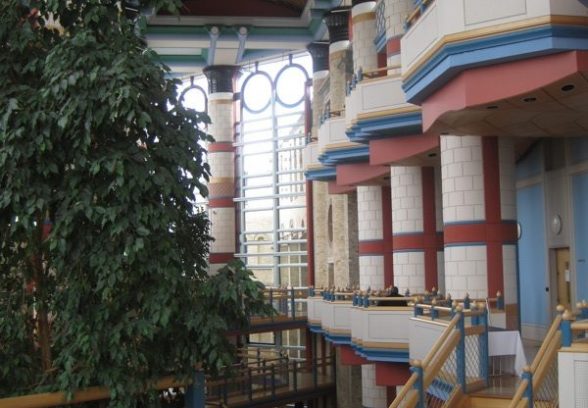This website uses cookies
This website uses cookies to enable it to function properly and to analyse how the website is used. Please click 'Close' to accept and continue using the website.



As post modernism finally comes of age with the announcement this week of a raft of listings from Historic England, the Twentieth Century Society celebrates the role it has played in successfully highlighting the growing threat to this much maligned style of architecture and the urgent need for heritage protection.
C20 Society Director Catherine Croft said she was absolutely delighted with Historic England’s decision to list 17 post modern buildings (https://historicengland.org.uk/whats-new/news/Post-Modern-Buildings-Listed) describing it as an ‘important turning point’ for this style of architecture. It follows a thematic assessment by Historic England of Britain’s best post modernism buildings.
Catherine said: “it’s really great to see Historic England being proactive and doing such a thorough survey of this as yet little understood period. In a way it represents the advent of the postmodern style into the architectural canon which is an exciting and important moment. We look forward to more of our best post modern architecture joining the heritage list.”
HE’s thematic review follows a Postmodernism Conference hosted by C20 last Spring amid concerns about alterations to leading postmodern buildings. These included Sir James Stirling’s No 1 Poultry (now listed at Grade II* following a concerted C20 campaign), Sir Terry Farrell’s Comyn Ching (now also listed at Grade II following an application by Sir Terry Farrell himself, supported by C20).
At the time C20 Director Catherine Croft said: “Unless we can turn around recent trends, we seriously risk obliterating Britain’s best postmodern heritage. We urgently need to build professional and public understanding of this much maligned and misrepresented style of architecture.”
Sadly this turning point is too late for John Outram’s wonderful Harp Heating HQ in Swanley. In autumn 2016, on hearing that the building was in peril of demolition, the Society moved to secure listing at Grade II. Unfortunately the Society was tipped off too late and the building was demolished before Historic England could assess it.
The C20 Society remains concerned that buildings under 30 years old can generally only be considered for listing if they are both “outstanding” and “at risk” and that threat is often seen to mean demolition when less drastic alterations can be extremely damaging.

Become a C20 member today and help save our modern design heritage.